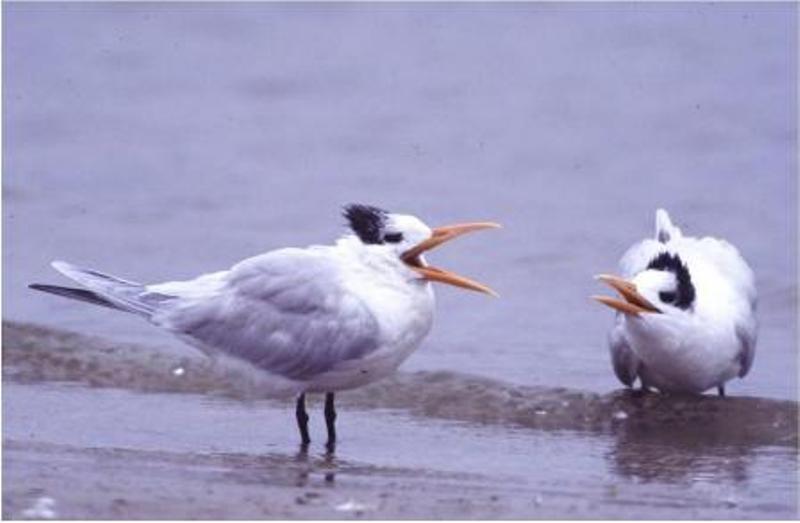Held Captive to Instinct
By Dave Hanks
How do animals know certain behaviors to perform when they have not been taught that behavior? How do butterflies and many birds know a migration route they have never previously followed? How do most animal mothers instinctively know what to do at birthing or hatching time? We humans are usually taught, and with the power of reason, we have the ability to think things out. Our DNA code is a powerful influence, but to an animal it is almost everything. They learn some things from their parents but are mostly controlled by their DNA – or in other words, with no chance for choices makes one a slave to each stimulus. The ROYAL TERN is a random example. Much of its behavior is programmed before hatching.
This is our second (next to the Caspian Tern) largest tern. It has a heavy, orange bill, a spiky, black crest and cap, a pale gray dorsal surface, and a white face, neck, and ventral surface. This tern summers on our southern coasts of both the Atlantic and Pacific Oceans. They are rarely found inland. Their fall migration route takes them to Argentina or Peru. Why migrate so far? – Their DNA requires them to.
This bird nests in large colonies and courtship involves the male offering a fish to his prospective mate. Why do they all do this? Their DNA requires it. Nests are in scrapes on the beach, and if washed away by a storm, they will make another attempt to nest. Royal Terns will defecate from the rim of their nest. It has been suggested that when the feces harden, the nest is reinforced against flooding. Once again, DNA is at work.
The chicks leave the scrape within one day after hatching and gather in a huge group called a CRECHE. Parents can recognize and feed their own chicks - differentiating them from others in the group. Evidently each chick’s call is recognizable. The adults are often seen hovering 20 to 30 feet above the water as they patrol for fish - their main food source.
(A confrontation along the Texas coast)
|
